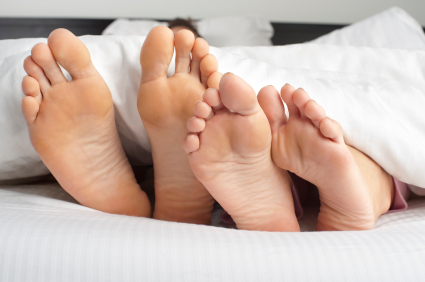I admit at first glance it sounds rather irrelevant to the problem of heel pain. However once you understand the anatomy it is vitally important.
Heel pain is caused by many factors. Like most ailments that affect us it is a combination of genetics and lifestyle. And while genetics are impossible to change, lifestyle is comparatively easy to change.
While a complete discussion of heel pain is beyond the scope of this blog, let’s briefly discuss why your sleeping position can be a factor in your heel pain.
One of the most common and effective treatments for heel pain is a stretching of the Achilles tendon. The Achilles tendon attaches to the back of your heel bone, envelopes the heel bone and continues along the bottom (plantar aspect) of your foot as the plantar fascia. While the plantar fascia is difficult to stretch and many times is painful since it is irritated, (plantar fasciitis), the Achilles tendon is relatively easy to stretch. When the Achilles tendon is stretched it provides some slack in the system and often reduces heel pain.
When we recommend Achilles stretching exercises we usually suggest stretching the Achilles tendon for five repetitions of about 30 seconds each. When you stretch the Achilles tendon you hold the foot up at the ankle.
If you sleep with your foot down at the ankle, especially if you sleep on your stomach — you are holding your foot in a down position for hours!
When you get out of bed and step down all of a sudden your foot goes up at the ankle and there is a tremendous strain on the Achilles tendon and the plantar fascia. It is very difficult for about 30 seconds of stretching to compensate for hours of the Achilles tendon held in a contracted position.
That’s why we always ask about sleeping position. If it is impossible to change your sleeping position at the very least we recommend you sleep with your feet off the end of the bed. I speak from personal experience.
When I had a bout of plantar fasciitis I realized I was sleeping on my stomach. I scooted down and slept with my feet off the end of the bed. That helped a little bit. I tried many different types of night-splints before I found one I could tolerate and a short time after using that night splint my heel pain disappeared. I use that type of night splint with my patients with great success!